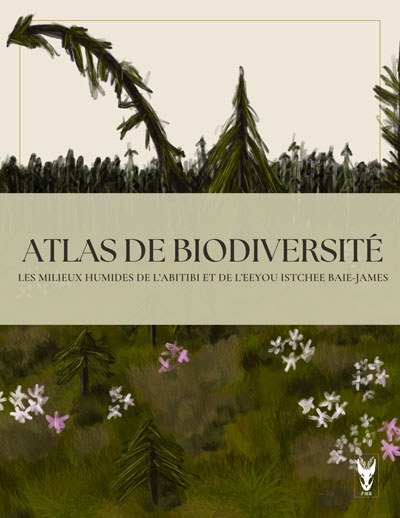
Robert Schneider
Membre régulier
Aménagement et sylviculture
Professeur régulier en aménagement et sylviculture
Université du Québec à Rimouski
Département de biologie, chimie et géographie
300, allée des Ursulines
Local: B-003
C.P. 3300, succ. A
Rimouski (Québec) Canada, G5L 3A1
Téléphone : 418 723-1986 poste 1863
Téléphone (sans frais) : 1 800 511-3382
FORMATION
- Ph.D. en sciences forestières, 2007 (Université Laval)
- M.Sc. en sciences forestières, 2001 (Université Laval)
- B.Sc.A. en aménagement et environnement forestier, 1999 (Université Laval)
- B.Sc. en chimie, 1994 (McGill University)
THÈMES DE RECHERCHE
Co-Titulaire de la chaire de Recherche sur la Forêt Habitée ![]() .
.
La Chaire de Recherche sur la Forêt Habitée (CRFH) mène des études dans les forêts du Bas Saint Laurent et de la Gaspésie, une région où 37% de l'économie est directement liée à l'écosystème forestier. La programmation de recherche s'articule en trois axes: a) Le fonctionnement de l'écosystème forestier, b) l'aménagement et la sylviculture et c) la socio-économie forestière. Il s’agit d’un projet institutionnel dont la programmation scientifique est épaulée par 5 professeurs réguliers de l’UQAR (Luc Sirois, Dominique Gravel, Dominique Arseneault et Nathalie Lewis) en plus des collaborateurs extérieurs. Au cours de la dernière années, la CRFH s’est dotée d’un centre affilié, le Consortium de foresterie de Gaspésie-Les Îles ![]() , qui est dédié à l’acquisition de connaissances appliquées et à leur transfert vers les utilisateurs des domaines de la gestion durable des forêts et de la sylviculture écosystémique.
, qui est dédié à l’acquisition de connaissances appliquées et à leur transfert vers les utilisateurs des domaines de la gestion durable des forêts et de la sylviculture écosystémique.
Ses travaux à l’UQAR visent à améliorer la compréhension de la croissance de nos forêts afin de moderniser leur gestion. Plus spécifiquement, son programme poursuit deux thèmes interreliés : (I) la sylviculture de restauration et (II) le développement et l’adaptation des modèles de croissance écophysiologique pour prédire l’évolution des peuplements à structure complexe. Le premier axe s’inscrit dans une démarche d’aménagement écosystémique où les interventions sylvicoles s’inspirent de la dynamique naturelle des forêts. Avec l’exploitation, les forêts du Bas-Saint-Laurent ont changé en structure et composition au cours du dernier siècle. De nouveaux traitements sylvicoles doivent être mis au point pour redonner aux forêts des structures s’apparentant aux forêts non exploitées. En plus de conduire les forêts vers des structures inéquiennes ou irrégulières, les interventions devront nécessairement favoriser les espèces qui vivent longtemps et qui ont diminué en importance suite à l’exploitation forestière.
Vous pouvez télécharger toutes mes références bibliographiques en format BibTeX, BibTeX-CSV, FRQNT ou EndNote
PUBLICATIONS
Livres
Aucun
Chapitres de livre
- Schneider, R., Meliho, M., Segalina, G., Fortin, M., Simard, T., Franceschini, T., Martin-Ducup, O., Gauthray-Guyenet, V., Sharma, D., Larocque, G. (2024) Growth and yield models for predicting tree andstand productivity. (Chap. 6) In Ecological Forest Management Handbook, CRC Press, pages 127-165
- Schneider, R., Franceschini, T., Fortin, M., Martin-Ducup, O., Gauthray-Guyénet, V., Larocque, G.R., Marshall, P., Bérubé-Deschênes, A. (2016) Growth and yield models for predicting tree and stand productivity. In Ecological Forest Management Handbook. (G. R. Larocque, Eds.) CRC press, Taylor & Francis Group, pages 141-178
Livres, numéros spéciaux et actes de colloques publiés à titre d'éditeur
Aucun
Articles révisés par un comité de lecture
- Mahatara, D., Barrette, J., Dufour, B., Sirois, L., Achim, A., Schneider, R. (2025) Changes in wood density, growth, and carbon storage of the main stem of planted white spruce (Picea glauca) after commercial thinning. Forest Ecology and Management, 580:122542
- Turquin, R., Aubin, I., Cardou, F., Schneider, R., Barrette, M., Sirois, L. (2025) Understory community dynamics 12 years after commercial thinning and gap creation in naturally regenerated and planted stands. Forest Ecology and Management, 593:122815
- Baral, S.K., Boudewyn, P., Hermosilla, T., Fortin, M., White, J.C., Wulder, M.A., Schneider, R., Stinson, G. (2025) Improving sample-based National Forest Inventory estimates of tree cover using Landsat-derived land cover data as auxiliary information. Canadian Journal of Forest Research, 55:1-19
- Mahatara, D., Campelo, F., Houle, L., Caron, A., Barrette, J., Francus, P., Schneider, R. (2024) CTRing: An R package to extract wood density profiles from computed tomography images of discs and logs. Dendrochronologia, 88:126274
- Dupont-Leduc, L., Power, H., Fortin, M., Schneider, R. (2024) Climate interacts with the trait structure of tree communities to influence forest productivity. Journal of Ecology, 112(8):1758 – 1773
- Liu, Q., Peng, C., Schneider, R., Cyr, D., McDowell, N.G., Kneeshaw, D.D. (2023) Drought-induced increase in tree mortality and corresponding decrease in the carbon sink capacity of Canada's boreal forests from 1970 to 2020. Global Change Biology, 29(8):2274-2285
- Liu, Q., Peng, C., Schneider, R., Cyr, D., Liu, Z., Zhou, X., Du, M., Li, P., Jiang, Z., McDowell, N.G. et al. (2023) Vegetation browning: global drivers, impacts, and feedbacks. Trends in Plant Science, 28(9):1014-1032
- Rijal, B., Power, H., Auger, I., Duchateau, E., Schneider, R., Bedard, S., Guillemette, F. (2023) Modelling sapling density for sugar maple-dominated mixed stands of eastern Canada. Canadian Journal of Forest Research, 53(12):953-968
- Achim, A., Moreau, G., Coops, N.C., Axelson, J.N., Barrette, J., Bedard, S., Byrne, K.E., Caspersen, J., Dick, A.R., D'Orangeville, L. et al. (2022) The changing culture of silviculture. Forestry, 195(2):143-152
- Desgagnés, J.-F., Schneider, R., St-Laurent, M.-H. (2022) Winter browsing in absence of an apical predator: Do high moose densities compromise tree regeneration? Forest Ecology and Management, 520:120403
- Goudiaby, V., Schneider, R., Brais, S., Raulier, F., Berninger, F. (2022) Understanding effects of competition and shade tolerance on carbon allocation with a carbon balance model. Forests, 13(4):572
- Fortin, M., Sattler, D., Schneider, R. (2022) An alternative simulation framework to evaluate the sustainability of annual harvest on large forest estates. Canadian Journal of Forest Research, 52(5):704 – 715
- Liu, Q., Peng, C., Schneider, R., Cyr, D., Liu, Z., Zhou, X., Kneeshaw, D.D. (2021) TRIPLEX-Mortality model for simulating drought-induced tree mortality in boreal forests: Model development and evaluation. Ecological Modelling, 455:109652
- Duchateau, E., Schneider, R., Tremblay, S., Dupont-Leduc, L., Pretzsch, H. (2021) Modelling the spatial structure of white spruce plantations and their changes after various thinning treatments. Forests, 12(6)
- Schneider, R., Franceschini, T., Duchateau, E., Bérubé-Deschênes, A., Dupont-Leduc, L., Proudfoot, S., Power, H., de Coligny, F. (2021) Influencing plantation stand structure through close-to-nature silviculture. European Journal of Forest Research, 140(3):567-587
- Gauthray-Guyénet, V., Schneider, R., Achim, A., Fortin, M., Pare, D., Arseneault, D. (2021) Legacy of forest composition and changes over the long-term on tree radial growth. Canadian Journal of Forest Research, 51(999):1-11
- Schneider, R., Dupont-Leduc, L., Gauthray-Guyénet, V., Cattaneo, N., Melo, L., Simard, T., Begni, A., Turquin, R., Morache-Mercier, A., Pinna, S. et al. (2021) Close-to-nature silviculture in eastern Quebec: Advances over the last decade. Forestry Chronicle, 97(3):250-262
- Duchateau, E., Schneider, R., Tremblay, S., Dupont-Leduc, L. (2020) Density and diameter distributions of saplings in naturally regenerated and planted coniferous stands in Quebec after various approaches of commercial thinning. Annals of Forest Science, 77(2)
- Cattaneo, N., Schneider, R., Bravo, F., Bravo-Oviedo, A. (2020) Inter-specific competition of tree congeners induces changes in crown architecture in Mediterranean pine mixtures. Forest Ecology and Management, 476
- Dupont-Leduc, L., Schneider, R., Sirois, L. (2020) Preliminary results from a structural conversion thinning trial in eastern Canada. Journal of Forestry, 118(5):515-533
- Schneider, R., Calama, R., Martin-Ducup, O. (2020) Understanding tree-to-tree variations in stone pine (Pinus pinea l.) cone production using terrestrial laser scanner. Remote Sensing, 12(1)
- Giroud, G., Schneider, R., Fournier, R.A., Luther, J.E., Martin-Ducup, O. (2019) Modeling black spruce wood fiber attributes with terrestrial laser scanning. Canadian Journal of Forest Research, 49:661-669
- Melo, L.C., Schneider, R., Fortin, M. (2019) The effect of natural and anthropogenic disturbances on the uncertainty of large-area forest growth forecasts. Forestry, 92(3):231-241
- Franceschini, T., Ferraille, T., Giroud, G., Barrette, J., Schneider, R. (2019) Modelling wood density and modulus of elasticity in white spruce plantations in Eastern Québec. Forestry Chronicle, 95(3):196 – 206
- Franceschini, T., Gauthray-Guyénet, V., Schneider, R., Ruel, J.-C., Pothier, D., Achim, A. (2018) Effect of thinning on the relationship between mean ring density and climate in black spruce (Picea mariana (Mill.)B.S.P.). Forestry, 91(3):366-381
- Schneider, R., Franceschini, T., Fortin, M., Saucier, J.-P. (2018) Climate-induced changes in the stem form of 5 North American tree species. Forest Ecology and Management, 427:446 - 455
- Fortin, M., Manso, R., Schneider, R. (2018) Parametric bootstrap estimators for hybrid inference in forest inventories. Forestry, 91(3):354-365
- Martin-Ducup, O., Schneider, R., Fournier, R.A. (2018) Analyzing the Vertical Distribution of Crown Material in Mixed Stand Composed of Two Temperate Tree Species. Forests, 9(11)
- Gauthray-Guyénet, V., Schneider, R., Pare, D., Achim, A., Loi, C., Sirois, L. (2018) Influence of shifts over an 80-year period in forest composition on soil properties. Plant and Soil, 433(1-2):111-125
- Melo, L.C., Schneider, R., Fortin, M. (2018) Estimating model- and sampling-related uncertainty in large-area growth predictions. Ecological Modelling, 390:62-69
- Berube-Deschenes, A., Franceschini, T., Schneider, R. (2017) Quantifying competition in white spruce (Picea glauca) plantations. Annals of Forest Science, 74(2)
- Baral, S.K., Berninger, F., Schneider, R., Pothier, D. (2017) Effects of heartwood formation on sugar maple (Acer saccharum Marshall) discoloured wood proportion. Trees - Structure and Function, 31(1):105-114
- Martin-Ducup, O., Schneider, R., Fournier, R.A. (2017) A method to quantify canopy changes using multi-temporal terrestrial lidar data: Tree response to surrounding gaps. Agricultural and Forest Meteorology, 237:184 -195
- Melo, L.C., Schneider, R., Manso, R., Saucier, J.-P., Fortin, M. (2017) Using survival analysis to predict the harvesting of forest stands in Quebec, Canada. Canadian Journal of Forest Research, 47(8):1066-1074
- Franceschini, T., Martin-Ducup, O., Schneider, R. (2016) Allometric exponents as a tool to study the influence of climate on the trade-off between primary and secondary growth in major north-eastern American tree species. Annals of Botany, 117(4):551-563
- Power, H., Franceschini, T., Schneider, R., Duchesne, I., Berninger, F. (2016) Crown characteristics slightly improve lumber mechanical property models for black spruce (Picea mariana (Mill.) BSP). Forestry Chronicle, 92(02):245-253
- Martin-Ducup, O., Schneider, R., Fournier, R.A. (2016) Response of sugar maple (Acer saccharum, Marsh.) tree crown structure to competition in pure versus mixed stands. Forest Ecology and Management, 374:20 - 32
- Berube-Deschenes, A., Franceschini, T., Schneider, R. (2016) Factors affecting plantation grown white spruce (Picea Glauca) acoustic velocity. Journal of Forestry, 114(6):629-637
- Barrette, M., Leblanc, M., Thiffault, N., Paquette, A., Lavoie, L., Belanger, L., Bujold, F., Cote, L., Lamoureux, J., Schneider, R. et al. (2014) Issues and solutions for intensive plantation silviculture in a context of ecosystem management [Enjeux et solutions pour la sylviculture intensive de plantations dans un contexte d'aménagement écosystémique]. Forestry Chronicle, 90(6):732-762
- Power, H., Schneider, R., Berninger, F. (2014) Understanding changes in black (Picea mariana) and white spruce (Picea glauca) foliage biomass and leaf area characteristics. Trees - Structure and Function, 28(2):345-357
- Pretzsch, H., Heym, M., Pinna, S., Schneider, R. (2014) Effect of variable retention cutting on the relationship between growth of coarse roots and stem of Picea mariana. Scandinavian Journal of Forest Research, 29(3):222-233
- Fortin, M., Tremblay, S., Schneider, R. (2014) Evaluating a single tree-based growth model for even-aged stands against the maximum size-density relationship: Some insights from balsam fir stands in Quebec, Canada. Forestry Chronicle, 90(4):503-515
- Franceschini, T., Schneider, R. (2014) Influence of shade tolerance and development stage on the allometry of ten temperate tree species. Oecologia, 176(3):739-749
- Fortin, M., Schneider, R., Saucier, J.-P. (2013) Volume and error variance estimation using integrated stem taper models. Forest Science, 59(3):345-358
- Baral, S.K., Schneider, R., Pothier, D., Berninger, F. (2013) Predicting sugar maple (Acer saccharum) discoloured wood characteristics. Canadian Journal of Forest Research, 43(7):649-657
- Schneider, R., Begin, J., Danet, A., Doucet, R. (2013) Effect of selective precommercial thinning on balsam fir stand yield and structure. Forestry Chronicle, 89(6):759-768
- Goudiaby, V., Brais, S., Berninger, F., Schneider, R. (2012) Vertical patterns in specific volume increment along stems of dominant jack pine (Pinus banksiana) and black spruce (Picea mariana) after thinning. Canadian Journal of Forest Research, 42(4):733-748
- Schneider, R., Fortin, M., Berninger, F., Ung, C.H., Swift, D.E., Zhang, S.Y. (2011) Modeling Jack Pine (Pinus banksiana) Foliage Density Distribution. Forest Science, 57(3):180-188
- Schneider, R., Berninger, F., Ung, C.H., Makela, A., Swift, D.E., Zhang, S.Y. (2011) Within crown variation in the relationship between foliage biomass and sapwood area in jack pine. Tree Physiology, 31(1):22-29
- Groot, A., Schneider, R. (2011) Predicting maximum branch diameter from crown dimensions, stand characteristics and tree species. Forestry Chronicle, 87(4):542-551
- Coll, L., Schneider, R., Berninger, F., Domenicano, S., Messier, C. (2011) Quantifying the effect of nitrogen-induced physiological and structural changes on poplar growth using a carbon-balance model. Tree Physiology, 31(4):381-390
- Beaulieu, E., Schneider, R., Berninger, F., Ung, C.H., Swift, D.E. (2011) Modeling jack pine branch characteristics in Eastern Canada. Forest Ecology and Management, 262(9):1748-1757
- Schneider, R., Zhang, S.Y., Swift, D.E., Begin, J., Lussier, J.M. (2008) Predicting selected wood properties of jack pine following commercial thinning. Canadian Journal of Forest Research, 38(7):2030-2043
- Schneider, R., Riopel, M., Pothier, D., Cote, L. (2008) Predicting decay and round-wood end use volume in trembling aspen (Populus tremuloides Michx.). Annals of Forest Science, 65(6):608
- Schneider, R., Berninger, F., Ung, C.H., Bernier, P.Y., Swift, D.E., Zhang, S.Y. (2008) Calibrating jack pine allometric relationships with simultaneous regressions. Canadian Journal of Forest Research, 38(10):2566-2578
Articles publiés dans des actes de colloque (proceedings)
Aucun
Rapports scientifiques, manuels et autres
- Belanger, L., Tremblay, J.-P., Bujold, F., Cote, L., Lamoureux, J., Thiffault, N., Lavoie, L., Paquette, A., Schneider, R. (2013) La sylviculture intensive de plantations dans un contexte d’aménagement écosystémique – Rapport du groupe d’experts, sous la direction de M. Barrette et M. Leblanc. Technical report, Ministère des Ressources naturelles. Direction de l’aménagement et de l’environnement forestiers
- Schneider, R., Berninger, F., Zhang, S.Y., Ung, C.-H. (2009) Integrating a wood-quality module with a growth simulator to quantify silvicultural scenarios in jack pine plantations (Are we making the right choices?). Technical report 791, USDA Forest Service - General Technical Report PNW-GTR
- Schneider, R. (2007) Matrices de répartition par produit du bouleau à papier du Bas-Saint-Laurent. Technical report, Ministère des Ressources naturelles et de la Faune. Gouvernement du Québec
- Riopel, M., Schneider, R. (2003) Étude sur la croissance et la sénescence des peupliers de l’est du Québec. Technical report, Ministère des Ressources naturelles et de la Faune. Gouvernement du Québec
Thèses, mémoires et essais
- Schneider, R. (2007) Effet de l'éclaircie commerciale sur la croissance et la qualité du bois du pin gris. Thèse de doctorat, Université Laval
- Schneider, R. (2001) Effet d'une éclaircie précommerciale 28 ans après traitement sur la productivité d'une sapinière en Gaspésie. Mémoire de maîtrise, Université Laval
Thèses, mémoires et essais supervisés
- Turquin, R. (2023) Réponse de la flore de sous-bois 12 ans après éclaircies commerciales et création de trouées dans des peuplements résineux. Mémoire de maîtrise, Université du Québec à Rimouski
- Desgagnes, J.-F. (2022) Déterminants des variations du taux de broutement exercé par l'orignal à hautes densités sur la régénération forestière en forêt aménagée. Mémoire de maîtrise, Université du Québec à Rimouski
- Begni, A. (2022) Évaluation de la régénération naturelle dans les plantations d'épinettes blanches au bas St-Laurent. Mémoire de maîtrise, Université du Québec à Rimouski
- Curtit, B. (2019) Comparer la taille et la forme des houppiers d'épinettes blanches et de sapins baumiers dans les plantations du Bas-Saint-Laurent. Mémoire de maîtrise, Université du Québec à Rimouski
- Gauthray-Guyénet, V. (2018) Effets des changements de la composition du peuplement forestier sur les propriétés des sols, la croissance des arbres et la densité du bois. Thèse de doctorat, Université du Québec à Rimouski
- Dupont-Leduc, L. (2017) Comparaison de l’accroissement ligneux entre l’éclaircie commerciale par dégagement d’arbres-élites et l’éclaircie par le bas. Mémoire de maîtrise, Université du Québec à Rimouski
- Martin, O. (2017) Étude de la structure et de la dynamique des houppiers à partir de données de LIDAR terrestre. Thèse de doctorat, Université du Québec à Rimouski
- Baral, S.K. (2016) Modélisation de la structure des arbres pour expliquer la qualité du bois d'érable à sucre (Acer saccharum Marsh.). Thèse de doctorat, Université du Québec à Rimouski
- Bérubé-Deschênes, A. (2016) Modélisation de la croissance et de la qualité du bois de l'épinette blanche (Picea glauca) à l'échelle individuelle en fonction de la compétition inter- et intra-spécifique. Mémoire de maîtrise, Université du Québec à Rimouski
- Li, L. (2014) Scaling MoE and MoR measurements for white spruce (Picea glauca) from mini-clear samples to full length lumber and relating the results to tree-level variables. Mémoire de maîtrise, Université du Québec à Rimouski
Articles non révisés par un comité de lecture
Aucun
<< Sergio Rossi | MembresReguliers | Martin Simard >>










